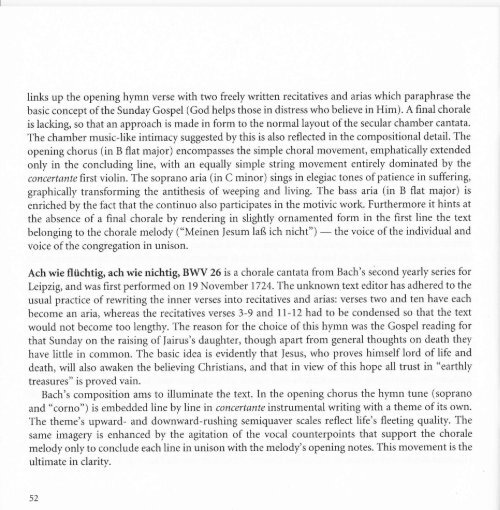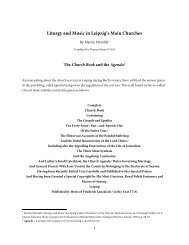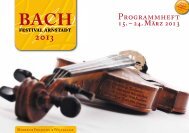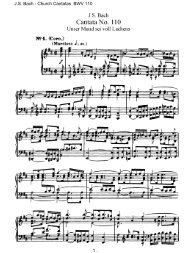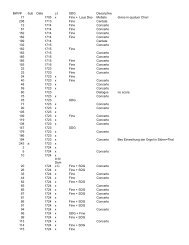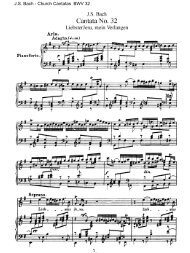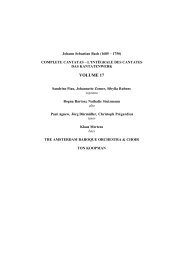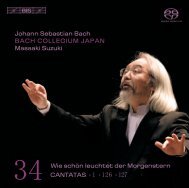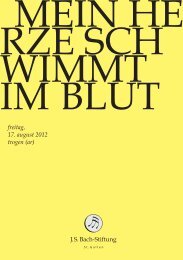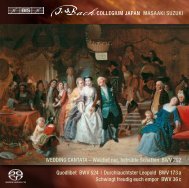Bach Cantatas, Vol. 2 - F. Werner (Erato 10-CD)
Bach Cantatas, Vol. 2 - F. Werner (Erato 10-CD)
Bach Cantatas, Vol. 2 - F. Werner (Erato 10-CD)
You also want an ePaper? Increase the reach of your titles
YUMPU automatically turns print PDFs into web optimized ePapers that Google loves.
links up the opening hymn verse with two freely written recitatives and arias which paraphrase the<br />
basic concept of the Sunday Gospel (God helps those in distress who believe in Him). A final chorale<br />
is lacking, so that an approach is made in form to the normal layout of the secular chamber cantata.<br />
The chamber music-like intimacy suggested by this is also reflected in the compositional detail. The<br />
opening chorus (in B flat major) encompasses the simple choral movement, emphatically extended<br />
only in the concluding line, with an equally simple string movement entirely dominated by the<br />
concertante first violin. The soprano aria (in C minor) sings in elegiac tones of patience in suffering,<br />
graphically transforming the antithesis of weeping and living. The bass aria (in B flat major) is<br />
enriched by the fact that the continuo also participates in the motivic work. Furthermore it hints at<br />
the absence of a final chorale by rendering in slightly ornamented form in the first line the text<br />
belonging to the chorale melody ("Meinen Iesum laß ich nicht") -<br />
the voice of the individual and<br />
voice ofthe congregation in unison.<br />
Ach wie flüchtig, ach wie nichtig, BWV 26 is a chorale cantata from <strong>Bach</strong>'s second yearly series for<br />
Leipzig, and was first performed on 19 November l724.The unknown text editor has adhered to the<br />
usual practice of rewriting the inner verses into recitatives and arias: verses two and ten have each<br />
become an aria, whereas the recitatives verses 3-9 and 11-12 had to be condensed so that the text<br />
would not become too lengthy. The reason for the choice of this hymn was the Gospel reading for<br />
that Sunday on the raising oflairus's daughter, though apart from general thoughts on death they<br />
have little in common. The basic idea is evidently that lesus, who proves himself lord of life and<br />
death, will also awaken the believing Christians, and that in view of this hope all trust in "earthly<br />
treasures" is proved vain.<br />
<strong>Bach</strong>'s composition ams to illuminate the text. In the opening chorus the hyrnn tune (soprano<br />
and "corno") is embedded line by line in concertante inslrumental writing with a theme of its own.<br />
The theme's upward- and downward-rushing semiquaver scales reflect life's fleeting quality. The<br />
same imagery is enhanced by the agitation of the vocal counterpoints that support the chorale<br />
melody only to conclude each line in unison with the melody's opening notes. This movement is the<br />
ultimate in clarity.<br />
52


